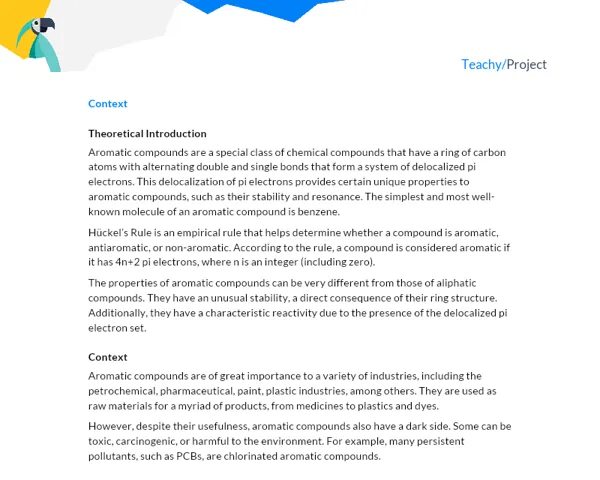Contextualization
Covalent bonds are connections between atoms that occur when they share a pair of electrons. In other words, it is the combination of two atoms in order to achieve stability. It has a strong correlation with the structure of materials and how they behave under diverse conditions. These bonds are the basis for organic chemistry and biochemistry - the branches of science that explain life and the variety of substances we find in our daily lives.
The ability of an atom in a molecule to attract electrons to itself is known as electronegativity. The difference in electronegativity determines whether a bond is polar covalent or nonpolar covalent. Covalent bonds are present in various molecules and substances that we use on a daily basis. Water, for example, is composed of covalent bonds.
Studying covalent bonds is essential for us to understand the physical and chemical properties of the substances that surround us. This knowledge allows us to predict how different substances can react under certain conditions and create new compounds with desirable properties.
Importance of Covalent Bonds
Covalent bonds have great relevance in our daily lives. They are present in almost everything that surrounds us, from the water we drink to the DNA that carries our genetic information. Substances composed of covalent bonds have characteristics such as low electrical and thermal conductivity, low melting and boiling points, and do not dissociate in water, which directly affects our daily lives.
Thus, understanding the formation and properties of covalent bonds is crucial for different areas, from medicine, where these bonds are used to create new drugs, to materials engineering, where they are essential to develop new compounds with specific properties for various applications.
We can deepen the subject with the following resources:
- Khan Academy, Covalent Bonding and Lewis Structures
- Brasil Escola, Covalent Bonding
- SóQ, Covalent Bonding
Practical Activity: "Unveiling the World of Covalent Bonding"
Title of the activity
Breaking Down Water: An Investigation of Covalent Bonding
Objective of the project
Through a hands-on approach, students will understand the nature and properties of covalent bonds, as well as the ability to identify them in different compounds. Students will investigate this property through the study of the most common compound on earth - water (H2O).
Detailed description of the project
In this project, students will be divided into groups of 3 to 5 members. Each group will work together to perform a series of hands-on experiments and research activities designed to enhance their understanding of covalent bonds and their properties.
The first step will be a detailed investigation into the properties and characteristics of covalent bonds, followed by the study of the compound water, drawing the relationship between its atomic structure and the covalent bonds that exist. The final part will consist of performing simple hands-on experiments that demonstrate some of the properties of substances formed by covalent bonds.
Materials required
- Computer with access to the internet for research
- Chemistry books (if available)
- Basic science kit with the following substances: water, sugar, salt, oil.
- Transparent container (glass or beaker)
- Mixing spoon
- Paper, pens and pencils for note taking
Detailed step-by-step procedure for carrying out the activity
- Conduct a detailed research about covalent bonds, their properties and characteristics, listing the main information found. (2 hours)
- Identify the covalent bonds in the water molecule, explain the polarity of the molecule and how this impacts its properties. Write a concise report about the findings. (2 hours)
- Plan and execute an experiment that will demonstrate one of the properties of substances that have covalent bonds. The experiment can involve mixing water with other substances (sugar, salt, oil), observing the results and relating them to the properties of the covalent bonds studied. (3 hours)
- Prepare a presentation of the results obtained, including the theory, the methodology used, the results and the conclusions reached. The presentation can be in the form of a PowerPoint, video or poster. (3 hours)
Project Deliverables
- Written document, containing:
- Introduction: Contextualize the study of covalent bonds in chemistry, explaining its importance and real-world application.
- Development: Detail the theory of covalent bonds, the description of the experiment performed, the methodology used and the results obtained. Make the conclusions obtained from the theory and practice explicit.
- Conclusion: Summarize the main points of the work, with emphasis on the learning obtained and the conclusions drawn from the project.
- Bibliography: Reference the sources used during the research and elaboration of the project.
- Presentation of the results of the experiment, in PowerPoint, video or poster.
This project should take approximately 10 hours per student, including research, experiment, report writing, and preparation of the presentation. The results obtained must be delivered after 30 days, allowing students to make their revisions and improvements.


